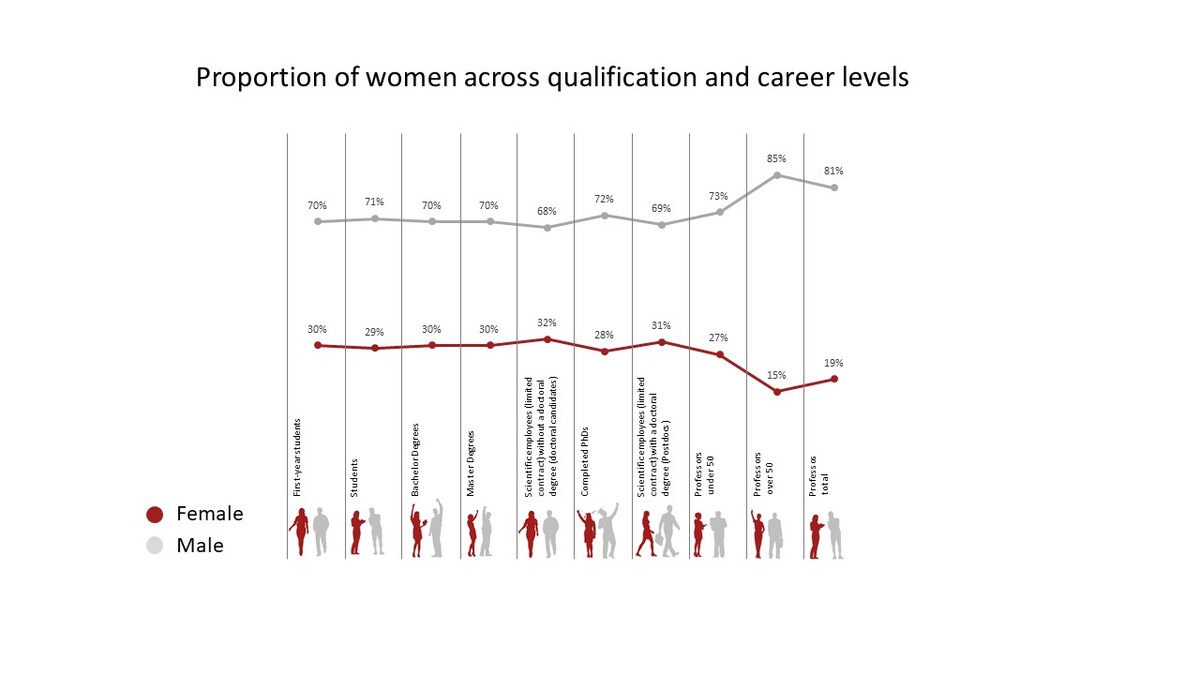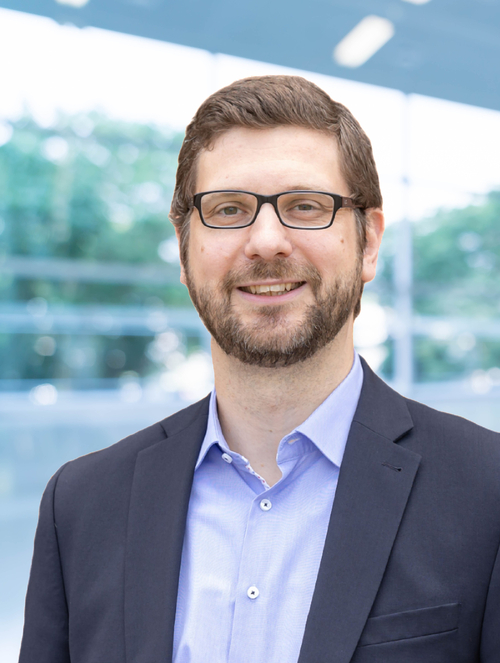Gender Monitoring at KIT
The annual gender monitoring report of KIT primarily presents the development of the shares of women in the defined target categories of the respectively valid equal opportunity plan. The equal opportunities plan contains an inventory and a descriptive evaluation of the KIT employee structure and concrete targets as well as measures for increasing the proportions of women and achieving equal opportunities. Pursuant to Section 16 (5) KITG, the equal opportunities plan is part of the KIT structural and development plan and is valid for five years.
The purpose of gender monitoring at KIT is to establish a reporting and control instrument for the realization of the equal opportunity goals which
- systematically tracks the planning and success of equal opportunity goals,
- focuses on the implementation of equal opportunity measures
- creates commitment,
- enables a systematic linking of centralized and decentralized aspects through statements by departmental management on department-specific equal opportunity situations (in the interim reports and the equal opportunity plan).
Gender monitoring is understood as a service offer for the KIT management as well as for scientific and science-supporting institutions.
The gender monitoring data is collected annually (for the first time in 2015) and submitted to the KIT Presidium, the equal opportunity officers, the KIT Senate, and the Supervisory Board for their information.


Data 2023: The most important facts in brief
Gender ratio in the qualification and career levels
The graph illustrates the gender ratio across various qualification and career levels. The proportion of women from entry-level positions to completed doctorates ranges between 28% and 33%. Compared to the previous year, there has been a 3 percentage point increase in the number of PhD graduates. Examining the age structure of professors reveals that among those under 50 years old, women constitute 27%. This indicates the success of efforts to increase the recruitment of women to professorships.
Appointment Procedures
In examining the appointment processes for filling a professorship, a significant increase in the percentage of women at each stage is evident in 2023. While the proportion of female applicants was 24%, 44% of the professorship position were offered to women. Compared to the previous year, the percentage of offers extended to women has risen by 14 percentage points. After a substantial decline in the proportion of female applicants during the COVID-19 pandemic, the figures in 2023 are now aligned with the levels seen in 2019.
Committees and management positions
In 2023, the proportion of women among the members of the Executive Board is 20%, just as it is for the heads of divisions. Within the KIT Senate, 28% of the members are women. The proportion of women among the members of the KIT Supervisory Board is 36%. The proportion of women in the management of service units, staff units, and central scientific institutions is 45% in 2023.
Personnel
The share of women among professors at KIT was 19% in 2023, an increase of one percentage point compared to the previous year. Among scientific staff, the proportion of women in 2023 was 30% and among science support staff from administration, technical support and the library, 55%. In 2022, the proportion of women among trainees remained unchanged at 36%.
Positive development for the KIT in the CEWS ranking according to gender equality aspects
In the current „CEWS University Ranking according to Equality Aspects 2023“", KIT shows a positive tendency: In the overall view of 75 universities, KIT moves up from ranking group 8 (2021) to ranking group 6 with 7 out of 12 of the possible points - out of 12 ranking groups in total.








